In 1907, Theodore Roosevelt's second term as President was drawing to a close. The massive battleship-building program of his first term was bearing fruit, with 10 ships commissioning between the start of 1906 and mid-1907. Tensions between the US and Japan were high due to Japanese immigration to the West Coast, culminating in race riots. The events of the Russo-Japanese War weighed heavily on the minds of US planners, particularly the disastrous voyage of the Russian Second Pacific Squadron to the Far East. Mahan's emphasis on concentration meant that the US fleet was entirely in the Atlantic, to guard against an assault into the New World by a European power.1 Roosevelt decided to conduct an exercise, moving the majority of the US fleet from Hampton Roads to San Francisco, as a test of the fleet's strategic mobility and to send a message to the Japanese.
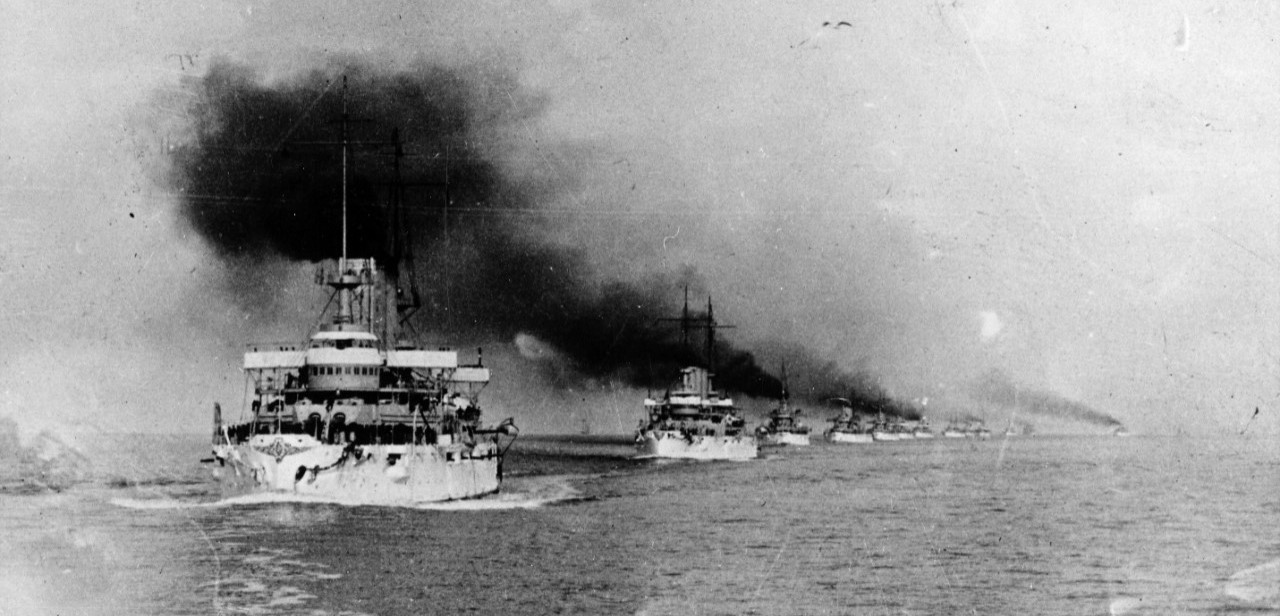
The Great White Fleet at sea, lead by Maine and Missouri
On December 16th, 1907, sixteen battleships2 departed US waters, bound first for Trinidad. The coal-burning fleet consumed 1,500 tons each day, providing a serious challenge for the Navy Department. 30 foreign colliers were chartered to supplement the eight naval vessels available after no US company bid for the contract on the first leg of the journey. The ships themselves, in a long line, were painted a brilliant peacetime white, quickly giving the force the name Great White Fleet.3
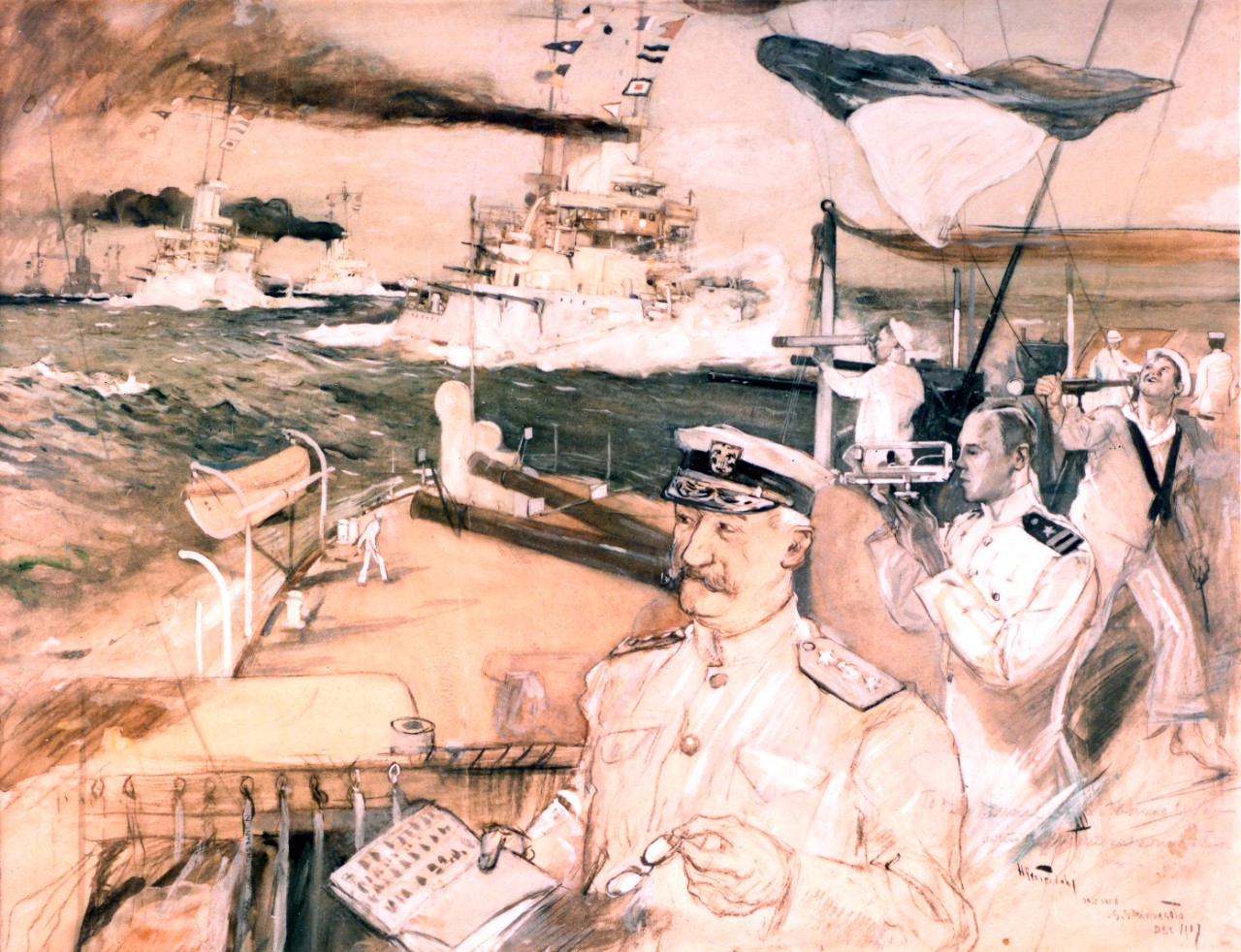
The Great White Fleet at sea, painted by Henry Reuterdahl
At sea, the fleet shifted into its standard steaming formation of two squadron columns of eight ships each. Each ship was 400 yards from the next ahead, mainmast to mainmast. This precise station-keeping quickly honed the skills of watch officers. The seven-day first leg was mostly uneventful, with good weather and only a few minor engineering and medical problems forcing some of the ships to break formation for a short period. Trinidad itself was a fairly uneventful port of call, except for the discovery of a stick of dynamite in the coal being loaded aboard Ohio.4

King Neptune's court aboard Connecticut
The next leg of the journey, to Rio de Janerio, was the longest of the trip around the Americas, at almost 3,400 nautical miles. Part of the way through the 15-day trip, it became apparent that some of the ships were going to run out of coal before Rio unless conservation measures were taken. The fleet slowed, and station-keeping requirements were relaxed. A highlight of this leg was the line-crossing ceremony, where sailors who had never crossed the equator were initiated into King Neptune's domains in a ritual that bore more than a passing resemblance to a fraternity initiation.
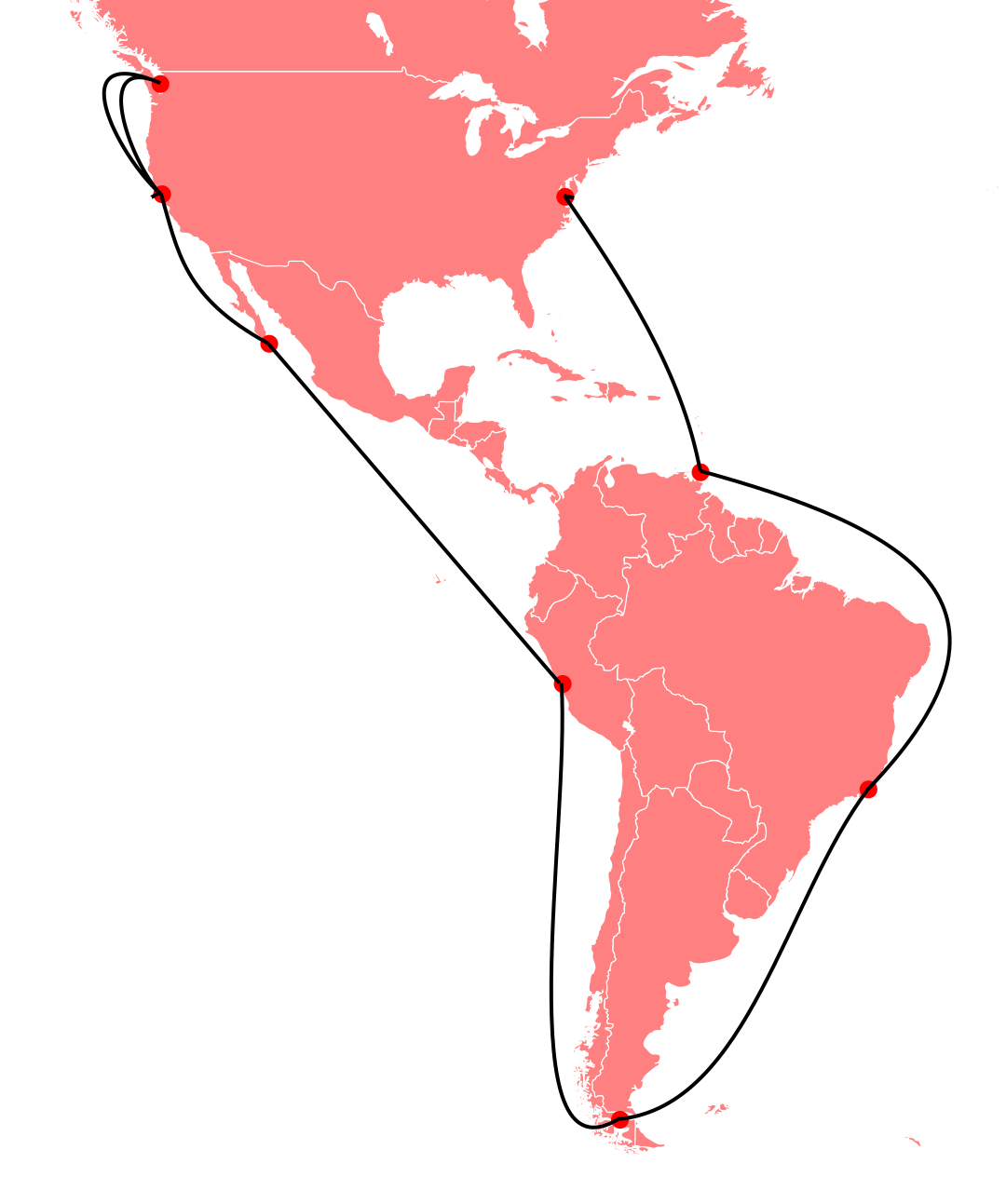
The first section of the Great White Fleet's voyage
The fleet arrived in Rio without losing even a single ship to fuel starvation, to a tumultuous welcome from the Brazilian populace. There were some concerns about the security of the fleet, probably from German or Japanese agents, but in the end, nothing came of it. Tensions with Japan had faded, and the Japanese were taking the cruise as a friendly visit. The only diplomatic complication came from Argentina. There was an intense rivalry between Argentina and Brazil, and the battleships were not going to stop until Punta Arenas, Chile, in the Straits of Magellan. To make up for the perceived diplomatic insult,5 the six destroyers accompanying the battleships made a stop in Buenos Aires.

The Fleet passing through the Straits of Magellan, by Henry Reuterdahl
The third leg of the voyage went much more smoothly. There was a marked improvement in station-keeping, and engineering casualties fell dramatically as the crew worked the kinks out of the equipment. One of the highlights was when an Argentine cruiser squadron intercepted the fleet and rendered honors. Punta Arenas was less exciting than Rio, the main highlights being the late arrival of one of the colliers (forcing the coaling process to run around the clock) and an incident where an American marine hit a Chilean petty officer (subsequently blown out of proportion in some accounts.)
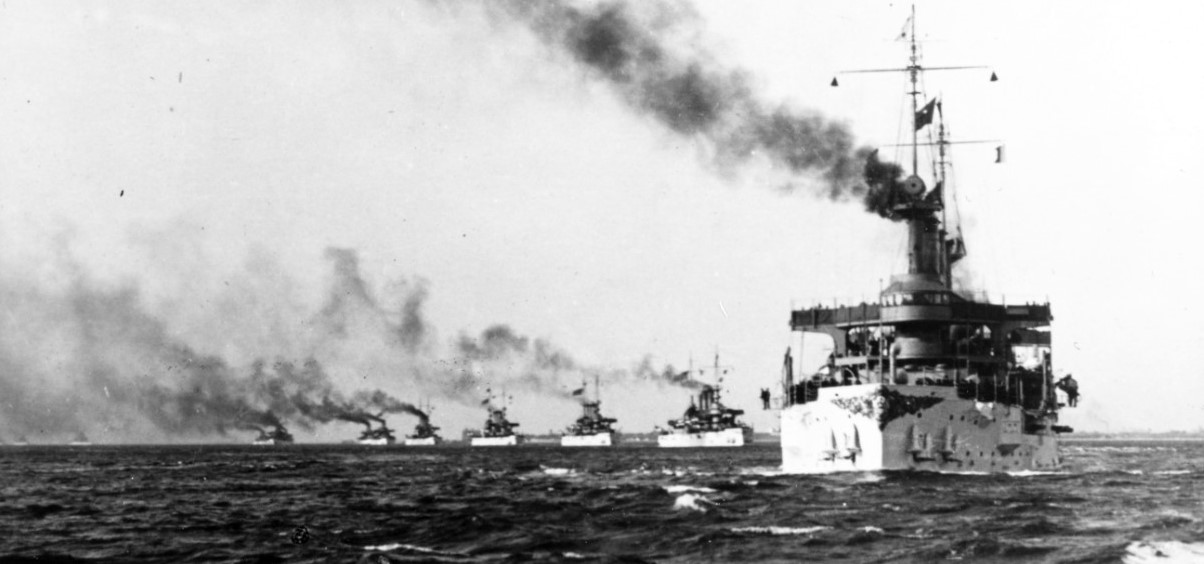
The Great White Fleet, lead by Connecticut
When they left Punta Arenas, the battleships found themselves enveloped in fog, which lasted six days. Fortunately, they were now experienced at operating in close formation at sea, and used searchlights, foghorns, and chip logs6 to keep close together despite visibility of maybe a hundred yards.
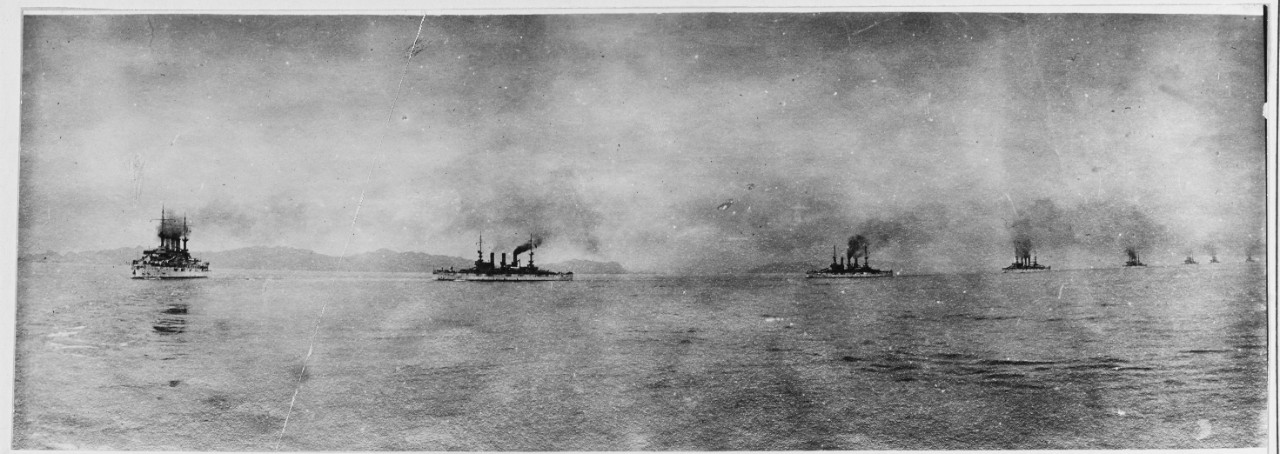
The fleet steaming through Valparaiso
The day after they left the fog, the fleet steamed through Valparaiso, Chile without stopping. Valparaiso, like Buenos Aires, had been skipped because the anchorage was not suitable for the fleet, but the State Department had persuaded the Navy to send the fleet past the town at close range on its way to Callao, Peru. This was a tremendous success, as the fleet put on an incredible close-order display.
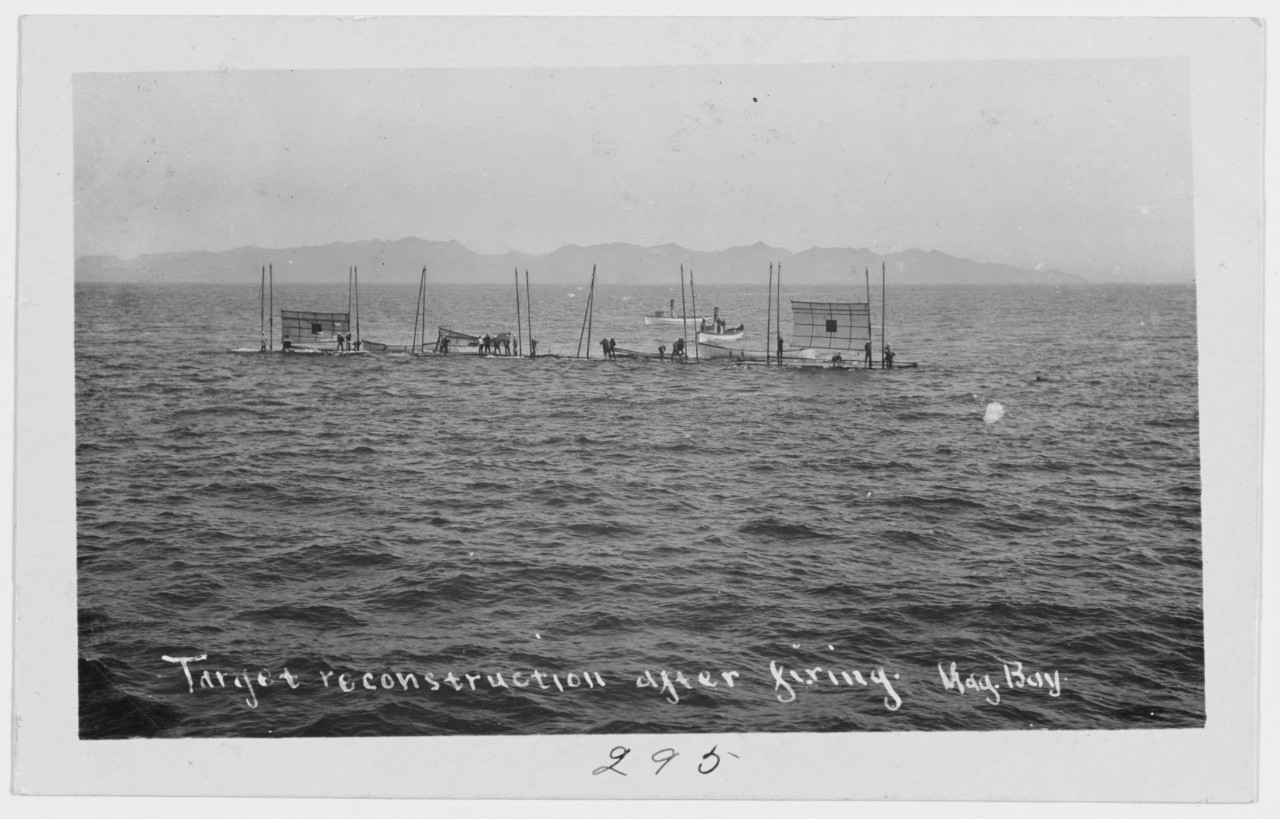
A target raft under repair in Magdalena Bay
The most notable incident of the Peruvian visit was when a bullfight was staged in Lima in honor of the Americans. Most of the 3,600 visitors found the spectacle barbaric, to the point where there was cheering for the bulls. When they left Callao, the fleet begin drilling even more intensely than usual, in preparation for their annual gunnery practice at Magdalena Bay, on the Baja Peninsula.7 To a large extent, this was seen as the conclusion of the first leg of the cruise. The ships were now quite close to the US West Coast, and the fleet was, in the words of Admiral Charles Thomas, the fleet's second in command, "in better condition for extended cruising than when we left Hampton Roads." Lessons were beginning to filter back to the broader navy, prompting major changes in US battleship design.
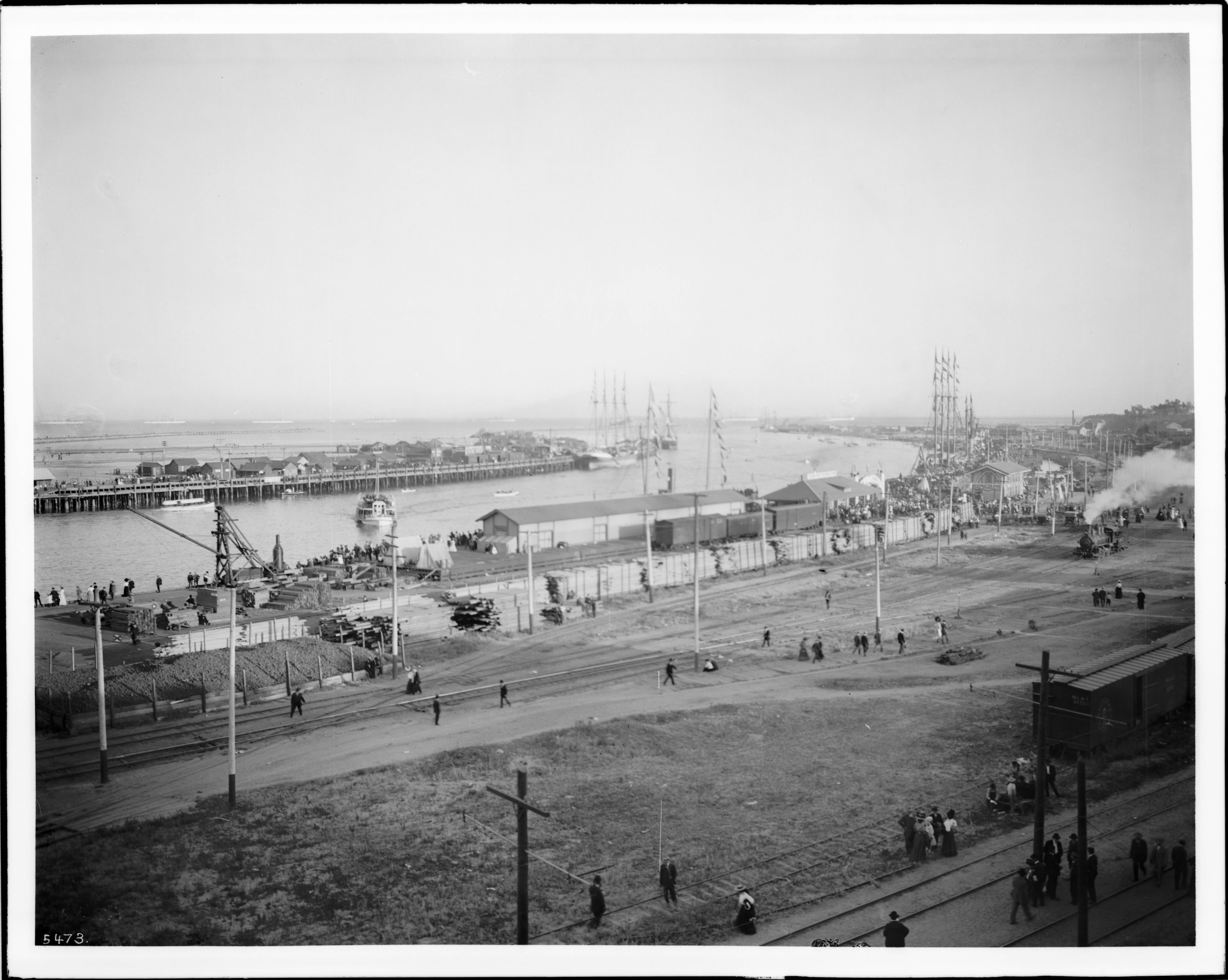
The Great White Fleet off San Pedro (click to zoom)8
Finally, on April 14th, 1908, the fleet anchored off San Diego, four months after their departure from Virginia. They were met with an enthusiastic welcome. Four days later, the fleet departed for San Pedro and saw that every vantage point along the coast was crowded with Californians eager to get a look at the fleet. Los Angeles gave an even warmer welcome than San Diego, with people camping on the beach overnight because the traffic going home was so bad.9 Calls at Santa Barbara, Monterey and Santa Cruz saw similar receptions, before the fleet anchored in San Francisco Bay on May 5th.

The Atlantic Fleet entering the Golden Gate (click to zoom)
San Francisco and Oakland had had 10 months to plan the fleet's welcome, and they outdid all previous cities. The railways estimated they brought 300,000 people into the city in the two days before the fleet's arrival. The Secretary of the Navy was on hand to review all of the ships on the Pacific Coast, and an estimated million people witnessed the 46 ships as they came in to anchor. The cities themselves held parades, balls, and receptions.
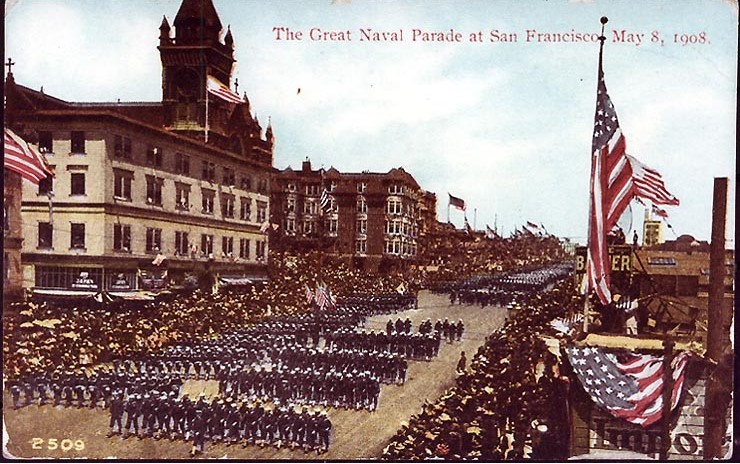
The parade for the fleet in San Francisco
Throughout the voyage to the Pacific, the fleet's commander, Admiral Robley Evans, had been bedridden, and Admiral Thomas had been forced to take over most of his duties. Evans had been in poor health even before the fleet departed Hampton Roads, but he was the last serving officer to have fought in the Civil War, and this, combined with a reputation from the Spanish-American War, apparently kept him from being relieved. He finally left the fleet in San Francisco, and was replaced by Charles Sperry.
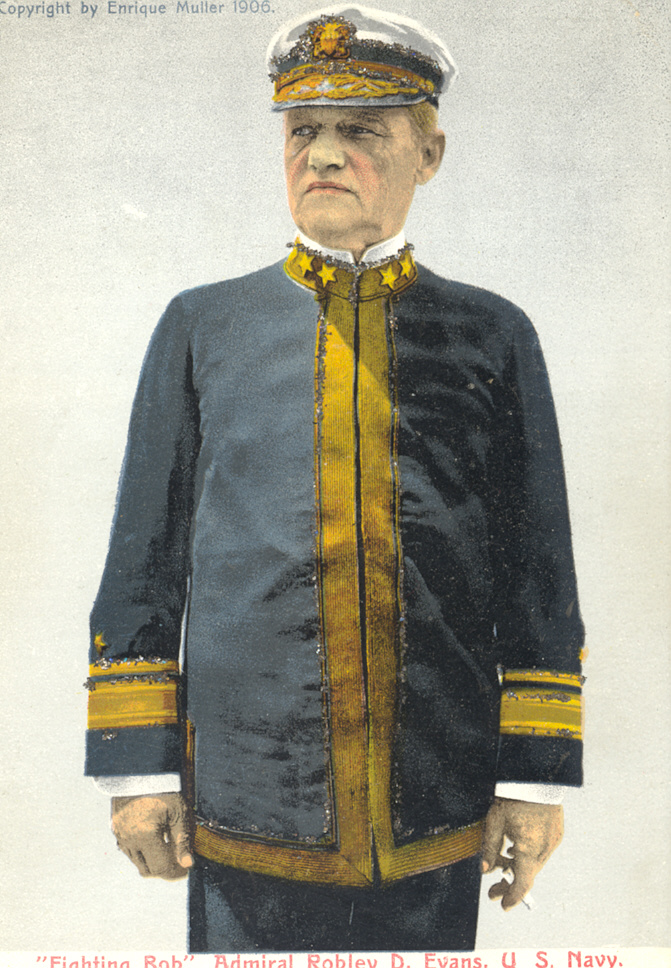
Robley D Evans
While the fleet was in Magdalena Bay, had been announced that they would be returning to the Atlantic via Australia, the Philippines, and the Suez Canal. We'll pick up the story of the next phase of the voyage later.
1 This was a serious concern at the time, with Germany conducting planning for an attack into the US. Well, not all that serious, because the Germans had no clue about logistics, but that wasn't apparent to the US. ⇑
2 First Squadron was composed of Connecticut, Kansas, Vermont, Louisiana, Georgia, New Jersey, Rhode Island, and Virginia. Second Squadron had Minnesota, Maine, Missouri, Ohio, Alabama, Illinois, Kearsarge and Kentucky. They were accompanied by six destroyers and four auxiliaries. ⇑
3 Not to be confused with the Great White Fleet of United Fruit. ⇑
4 This was likely a dud from the mining of the coal, and not an attempt at sabotage. ⇑
5 There were two main reasons for this. First, the Navy wanted to get the ships to the Pacific as quickly as possible in keeping with the nature of the exercise. Second, Buenos Aires was too shallow to take the ships. ⇑
6 A towed piece of wood to raise spray so the next ship in line had an idea of the distance. ⇑
7 Magdalena Bay was an excellent area to do gunnery practice in, a large swath of sheltered water, surrounded by inhospitable terrain and empty of civilians. Such areas were nearly absent on the US Pacific coast. ⇑
8 I believe that Iowa's current location is within the field of view of this photo. It's weird how often San Pedro turns up in battleship history. You should go there and see her. ⇑
9 LA: Celebrating 110 years of terrible traffic jams! ⇑

Comments
Mention of the difficulty in keeping the ships fuelled with coal, combined with the podcasts I was listening to today about the US Civil war and the deliberate decision to disrupt and destroy the logistic basis of the Confederate military, I have a question:
Have any of the important naval battles of the modern era actually been decided by cutting off the enemy's fuel supplies?
I know that both Germany and Japan had basically run out of oil by the end of WWII, but was it a deciding factor in any of the battles?
Bonus points if it wasn't the oil, but some other strategic supplies, such as rubber or copper or high quality glass or something.
Fuel supply doesn't decide battles so much as it decides which battles will be fought and how. For contingency reasons, navies like to keep their tanks full. If they can't fill up after an operation, they probably won't operate. The attack on Japanese tankers forced the Japanese fleet to relocate to various sites where oil was available, mostly in Borneo, IIRC. This meant that they weren't in a good position to oppose American attacks. The other big problem with lack of fuel is sticking to port. Navies tend to become less effective when they can't spend time at sea, which happens when enough fuel isn't available.
That makes a lot of sense. Though now I'm wondering about the German cruiser raiders of the start of WWI. If I recall correctly they were all caught when they were trying to raid islands for supplies.
The German attempt to use liners as auxiliary cruisers in WW I came to naught for this same reason -- most liners depended on having frequent coal reloads, and therefore without bases they couldn't operate. (The most successful German commerce raider of WW I was the Mowe, which IIRC was a sailing ship with an auxiliary engine.)
The part about being found while raiding islands was more a question of the difficulty of finding anybody on the open seas in pre-air, pre-radar days. Even in WW II, ships could stay at sea for weeks without being spotted if they were careful not to operate in the trade lanes -- for instance, German tankers pre-positioned in the North Atlantic to support surface ship raiding operations. Of course, if you never got into the trade lanes, you never spotted any ships to raid, which was a critical failure in terms of mission success for commerce raiders.
(Fun fact: in WW II, the British rear admiral commanding a cruiser squadron in the South Atlantic decided to position himself at the trade route focus off the River Plate on the coast of South America, figuring that sooner or later a German raider would show up in the area... and Graf Spee did.)
The hunters kept track of likely destinations and showed up there, which is why so many battles with raiders happened there instead of in deep ocean.
The British ran into the same problem with their attempts to use liners as auxiliary cruisers, and they were just trying to enforce the North Sea blockade.
This is almost certainly (I don't have the relevant book to hand) not quite true. The British gave up the strategy of hunting raiders in focal areas in about 1905, and replaced it with a system based on gathering and disseminating information centrally to direct the hunters. The OIC was in operation from the start of WWII, and probably directed the hunt for Graf Spee. So yes, they did figure that a raider would show up there, but they also knew which one and approximately when.
I checked the book in question, and I was wrong on this one. The lack of D/F stations in the South Atlantic meant that the OIC was totally blind. The author says they were "practically back in the days of Nelson" so far as hunting raiders was concerned. But that was the exception, not the rule.
These were significant on earlier legs?
Yes. Reciprocating steam engines were temperamental beasts, and there were several times when battleships were forced to fall back and make repairs.
Ohhh, ship casualties...